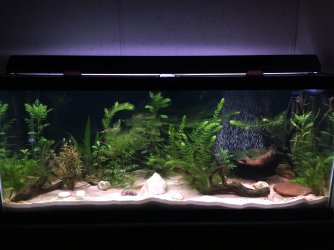julielynn47
Fishaholic
I hope I spelled that correctly. I have this in my 75 gallon, which has not even got fish in it. It just appeared a few days and I have no idea how to get rid of it. It has turned my light colored sand green. It is on the plants, rocks, everything.
I have read that you need to add an air stone...nope...got one with lots of bubbles going. I have read to make sure you have a lot of water movement...nope again as I already have that. Read that you might be overfeeding...nope, no fish, no food has ever gone in this tank.
Any ideas how to get rid of it without using chemicals? And any other ideas how it got in the tank to begin with?
I have read that you need to add an air stone...nope...got one with lots of bubbles going. I have read to make sure you have a lot of water movement...nope again as I already have that. Read that you might be overfeeding...nope, no fish, no food has ever gone in this tank.
Any ideas how to get rid of it without using chemicals? And any other ideas how it got in the tank to begin with?


